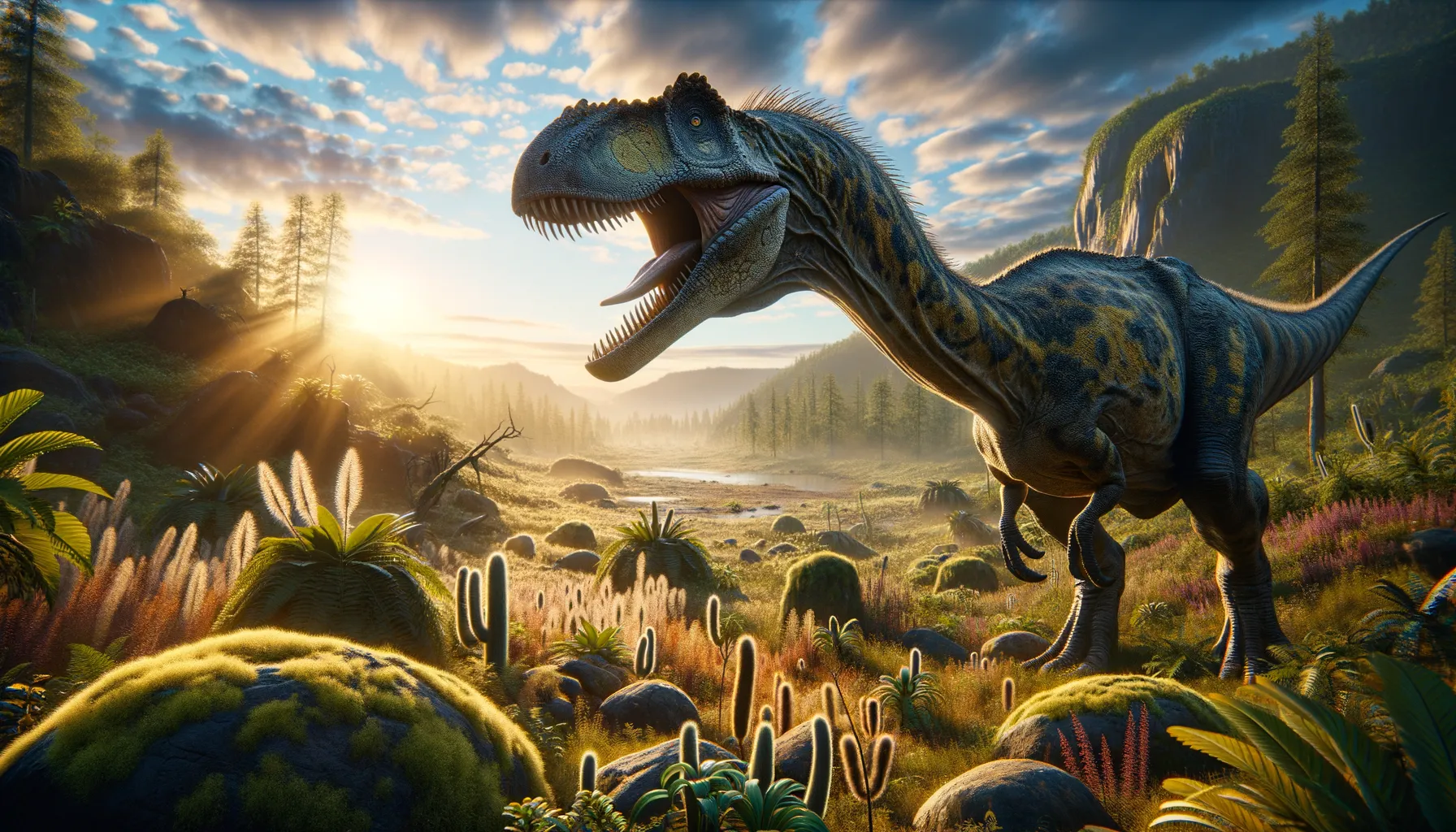
Hypsibema
The gentle giant of the late Cretaceous.
Period
Cretaceous
Length
Up to 30 feet long.
Height
Approximately 10 feet tall at the hips.
Weight
Estimated between 3 to 4 tons.
Hypsibema is a genus of hadrosaurid dinosaur that lived during the late Cretaceous period. Known for its duck-billed appearance, it roamed what is now North America. This plant-eating dinosaur was one of the larger hadrosaurs, equipped with a battery of grinding teeth, perfect for processing tough vegetation. Its fossils provide precious insights into the diverse ecosystems of the ancient past.
Diet
Hypsibema was a herbivore, feeding primarily on the lush plant life of its environment. It likely ate a variety of ferns, conifers, and flowering plants using its specialized teeth to grind tough vegetation.
Hunting
As a herbivore, Hypsibema did not hunt other animals. Instead, it might have foraged in herds, protecting itself from predators by moving in groups.
Environmental challenges
Hypsibema lived in a world with frequent climate shifts, which altered the availability of its food sources. Predators were a constant threat, requiring vigilance and potential herd movements for safety. As the environment changed, it needed to adapt by changing feeding behaviours and migrating to areas with plentiful food.
Speed
Moderate, likely averaging around 15 mph.
Lifespan
Estimated to be around 70 years.
First discovery
First discovered in the state of Missouri, USA.
Fun Facts
- Hypsibema was a type of dinosaur known as a hadrosaur, which is often called a 'duck-billed dinosaur' because of its flat snout.
- It lived during the Late Cretaceous period, around 70 to 66 million years ago, a time when dinosaurs were thriving across the Earth.
- This dinosaur was a herbivore, meaning it fed on plants, using its specialized teeth to chew tough vegetation.
- Hypsibema could grow quite large, reaching lengths of up to 30 feet, making it one of the bigger members of its family.
- Fossils of Hypsibema have been found in North America, with notable discoveries in states like Missouri.
- It is the state dinosaur of Missouri, highlighting its significance in the region's paleontological history.
- Hypsibema was likely a social animal, living in herds to protect itself from predators and to increase its chances of finding food.
Growth and Development
Hypsibema experienced rapid growth after hatching, especially in the first few years. Juveniles probably grew in stages, depending on environmental conditions and food availability. As they matured, social dynamics and size likely offered some protection from predators.
Habitat
This dinosaur thrived in lush, subtropical environments with abundant vegetation. Its habitat likely included forests, floodplains, and areas near water sources like rivers and lakes. Such settings provided ample food and opportunities for nesting.
Interaction with other species
Hypsibema likely coexisted with various other dinosaur species, possibly competing for food resources with other herbivores. It may have shared its habitat with predators and relied on herd behaviour for protection. Its interaction would have been cautious to avoid becoming prey.
Natural lifespan
In the wild, Hypsibema could live up to 70 years.
Reproduction
Hypsibema reproduced through egg-laying, with females laying clutches of eggs in nests possibly made in sandy or earthy areas. They might have exhibited some form of parental care, although the extent is still debated among scientists.
Social behaviour
Hypsibema might have lived in herds, which provided social interaction and protection. Herds could be composed of individuals of different ages, moving together for safety during feeding and migration. Social structures could include complex communication to coordinate movement and alert others to danger.
Fossil locations
In the United States, Hypsibema fossils have been predominantly found in Missouri. The discovery of these fossils has expanded our understanding of dinosaur distribution in North America during the late Cretaceous period. These fossils are key to studying the species' anatomy and lifestyle.
